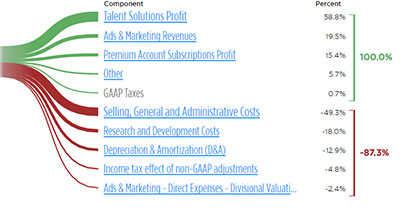

The funds and other products referred to on this Site may be offered and sold only to persons in the United States and its territories. Hartford Funds refers to HFD, Lattice, and HFMC, which are not affiliated with any sub-adviser or ALPS. are all SEC registered investment advisers. HFMC, Lattice, Wellington Management, SIMNA, and SIMNA Ltd. (SIMNA Ltd) serves as a secondary sub-adviser to certain funds. Schroder Investment Management North America Ltd. Certain funds are sub-advised by Wellington Management Company LLP and/or Schroder Investment Management North America Inc (SIMNA). Advisory services may be provided by Hartford Funds Management Company, LLC (HFMC) or its wholly owned subsidiary, Lattice Strategies LLC (Lattice). ETFs are distributed by ALPS Distributors, Inc. Mutual funds are distributed by Hartford Funds Distributors, LLC (HFD), Member FINRA| SIPC. Reverse splits are rare and sometimes seen as a sign of company turmoil. Other times, a price that dips below a certain threshold can cause the stock to be delisted from an exchange or dropped from some mutual-fund holdings. A stock price might sink so low that a company’s reputation can be put at risk. Shareholders end up with 10 fewer shares for each share formerly held.īut isn't a cheaper share price better? – Not always. For example, instead of a stock trading at $5 per share, a 10-for-1 reverse stock split would allow it to trade for $50 per share ( FIGURE 2). What's a reverse split? – In a reverse stock split, a company decides to decrease the number of outstanding shares to make the stock more expensive to investors. In 2021, Rivian, the electric-truck maker, implemented an 8.52859-for-1 split. Three-for-two splits are also common, but fractional splits are not unheard of. What is the most common stock split ratio? – A 2-for-1 stock split is the most common ratio. That brought the share price down to a more affordable $113. But, in February 2022, Alphabet announced a 20-for-1 stock split, effective July 14, 2022. Over the long term, a company’s value is determined by its earnings, not its stock price.Ī recent example – In early 2022, the per-share price of Alphabet, Google’s parent company, had soared to nearly $2,200-a high barrier for many ordinary investors. But investors shouldn’t buy a stock simply because they hope it’ll rise in price after a split. Mutual fund investors can benefit when individual companies do stock splits if the fund they own holds those companies.ĭo stock splits benefit investors? – It’s nice to own more shares after a split, since the reduced per-share price might mean there’s room for greater potential price growth. These splits help to bring in new money and make the fund more marketable. Mutual funds split the same way individual companies split, but it’s much less common. For example, after a 2-for-1 stock split, the cost basis of each share owned after the split will be half of what it was before the split.ĭo mutual funds split like individual stocks? – Yes. No taxes owed! – Stock splits aren’t a taxable event, but an investor’s cost basis in a stock should be adjusted to reflect a split. For companies, stock splits can be an expensive process requiring lots of legal oversight and adherence to regulatory rules. Nor does a split change the total value of an investor’s portfolio holding per se. Is the split worth it? – Stock splits have no tangible impact on a company’s total value-they simply create more shares at more affordable prices. From time to time, stock splits are followed by a bump in stock performance-but not always. Making it easier for investors to buy shares at a lower share price also helps companies broaden their base of ownership.

This is also called a forward split.īenefits of forward splits – Companies tend to implement forward stock splits when the outlook for continued growth and profitability is strongest. For example, instead of a stock trading at $1,000 per share, a 10-for-1 stock split would allow it to trade for $100 per share ( FIGURE 1) while the number of held shares would increase tenfold. What are stock splits? – Stock splits happen when a company increases its outstanding shares to make the stock more affordable to investors.


 0 kommentar(er)
0 kommentar(er)
